Menu
Chuck Yeager flies the M2-F1 Lifting Body
The Birth of Wingless Flight
The original idea of Lifting bodies was conceived in 1957 by Dr. Alfred J. Eggers JR. then the assistant director of Research and Development Analysis & Planning at what later became the NASA Ames Research Center, Moffett Field, California. NASA had earlier been investigating the problems associated with re-entry of missile nose cones. H. Julian Allen, another Ames engineer, determined that a blunt nose cone was a desirable shape to survive the aerodynamic heating associate with re-entry from space. During his research, Eggers found that by slightly modifying a symmetrical nose cone shape, aerodynamic lift could be produced. This lift would enable the modified shape to fly back from space rather than plunge to earth in a ballistic trajectory.
Below is a slideshow of images from the M2-F1 program
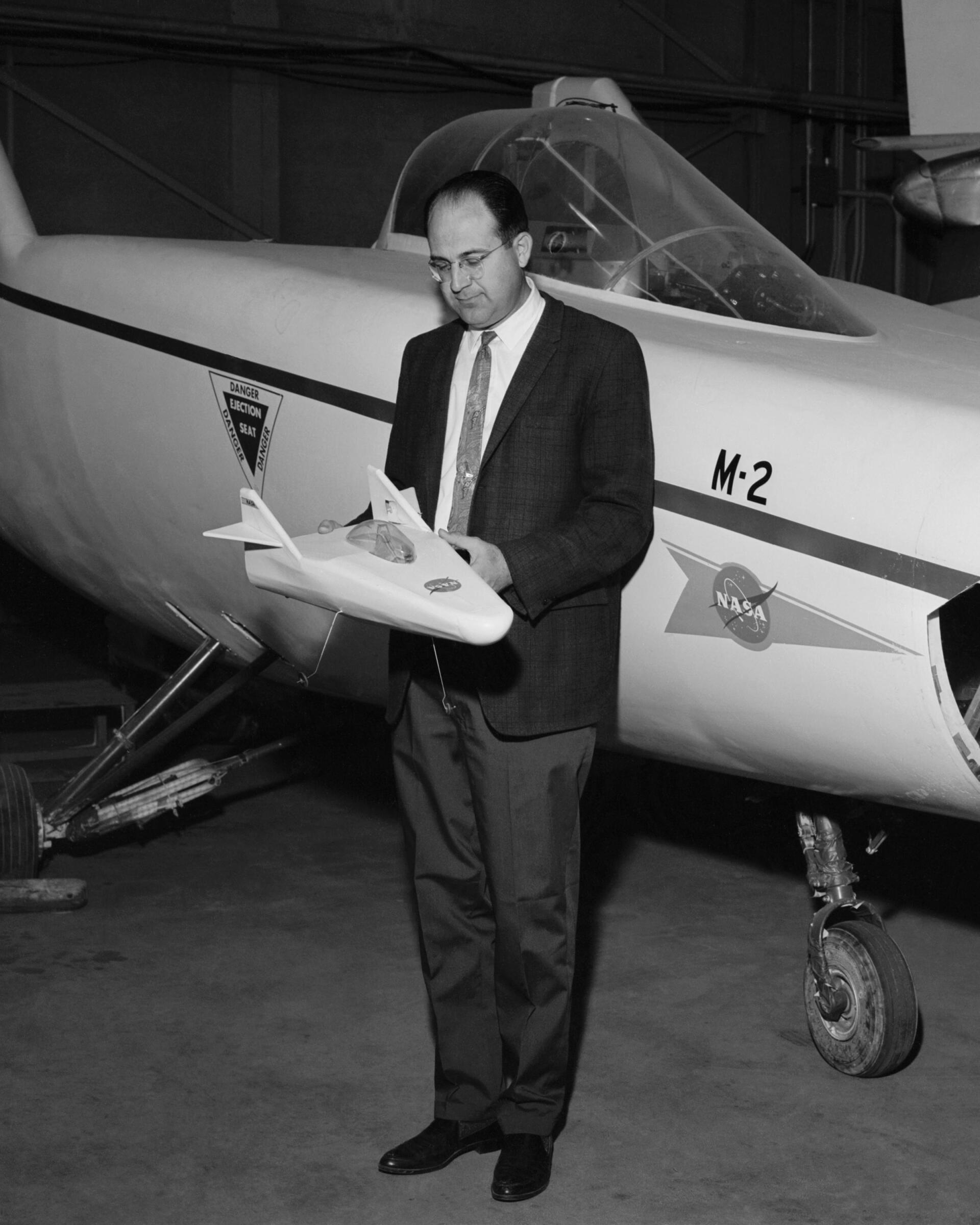
Slide title
Dale Reed with a model of the M2-F1 and the actual M2-F1 lifting body
Button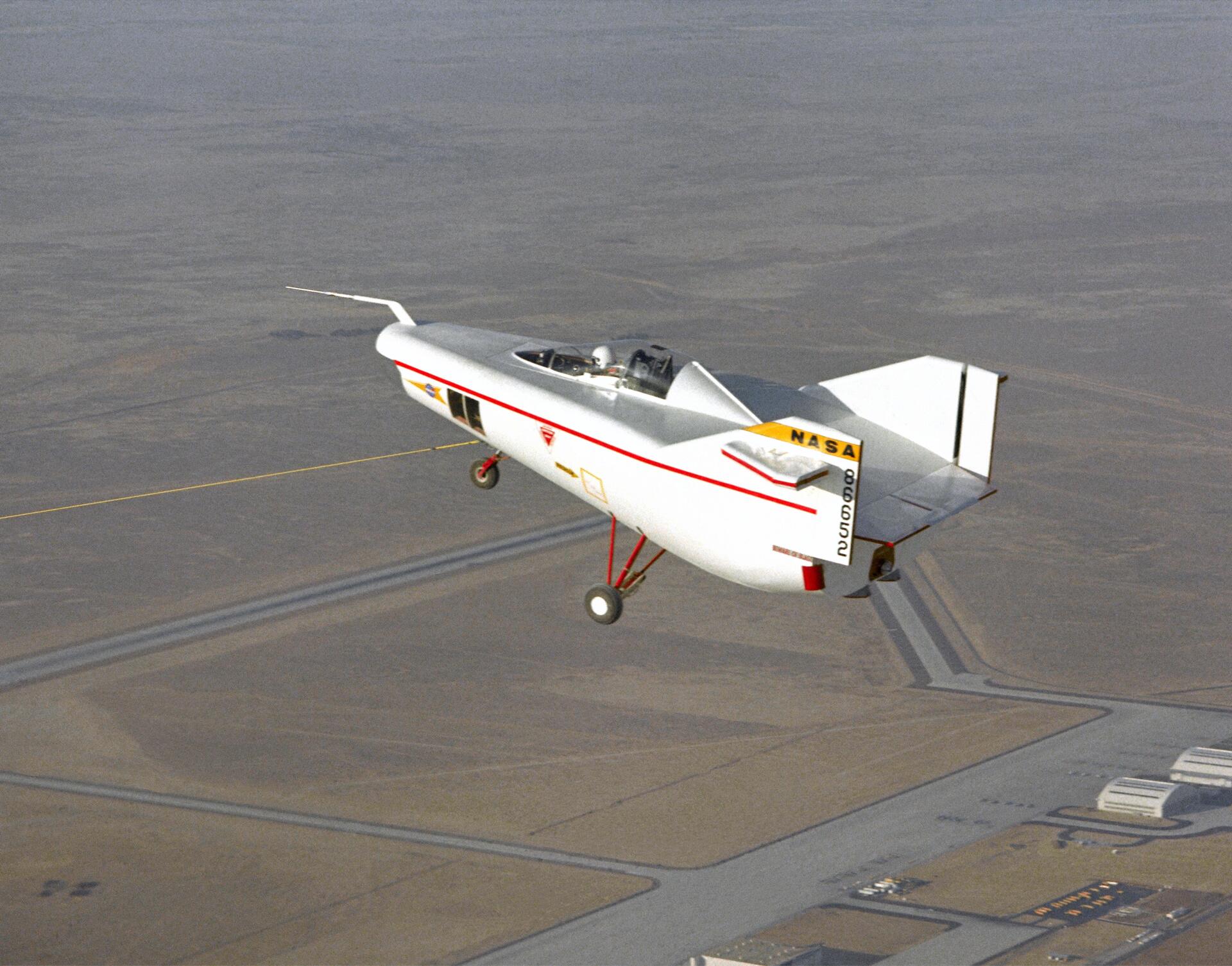
Slide title
Early tow test of the M2-F1 (under tow by C-47)
Button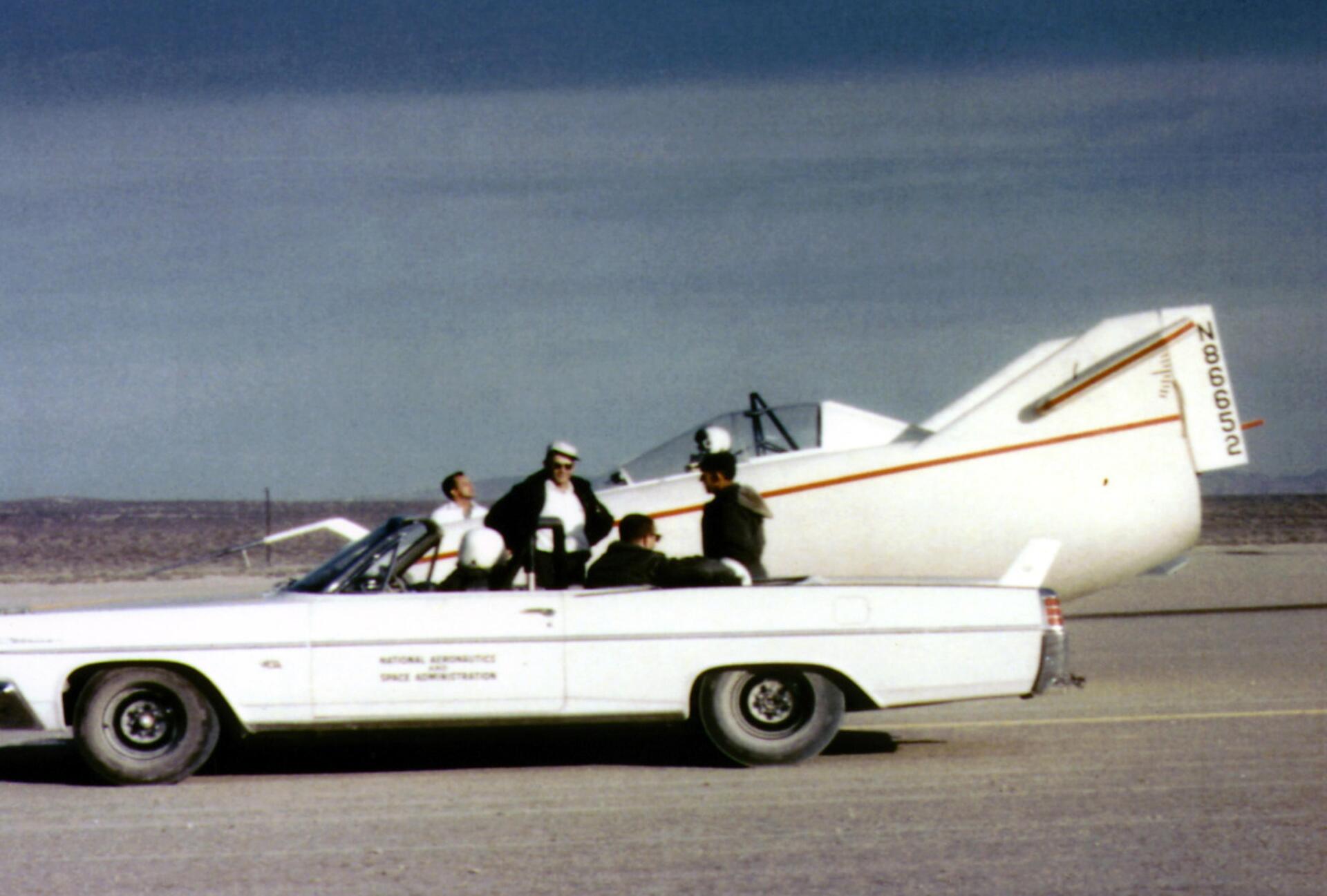
Slide title
In the earliest test "flights" the M2-F1 was towed behind a Pontiac Catalina
Button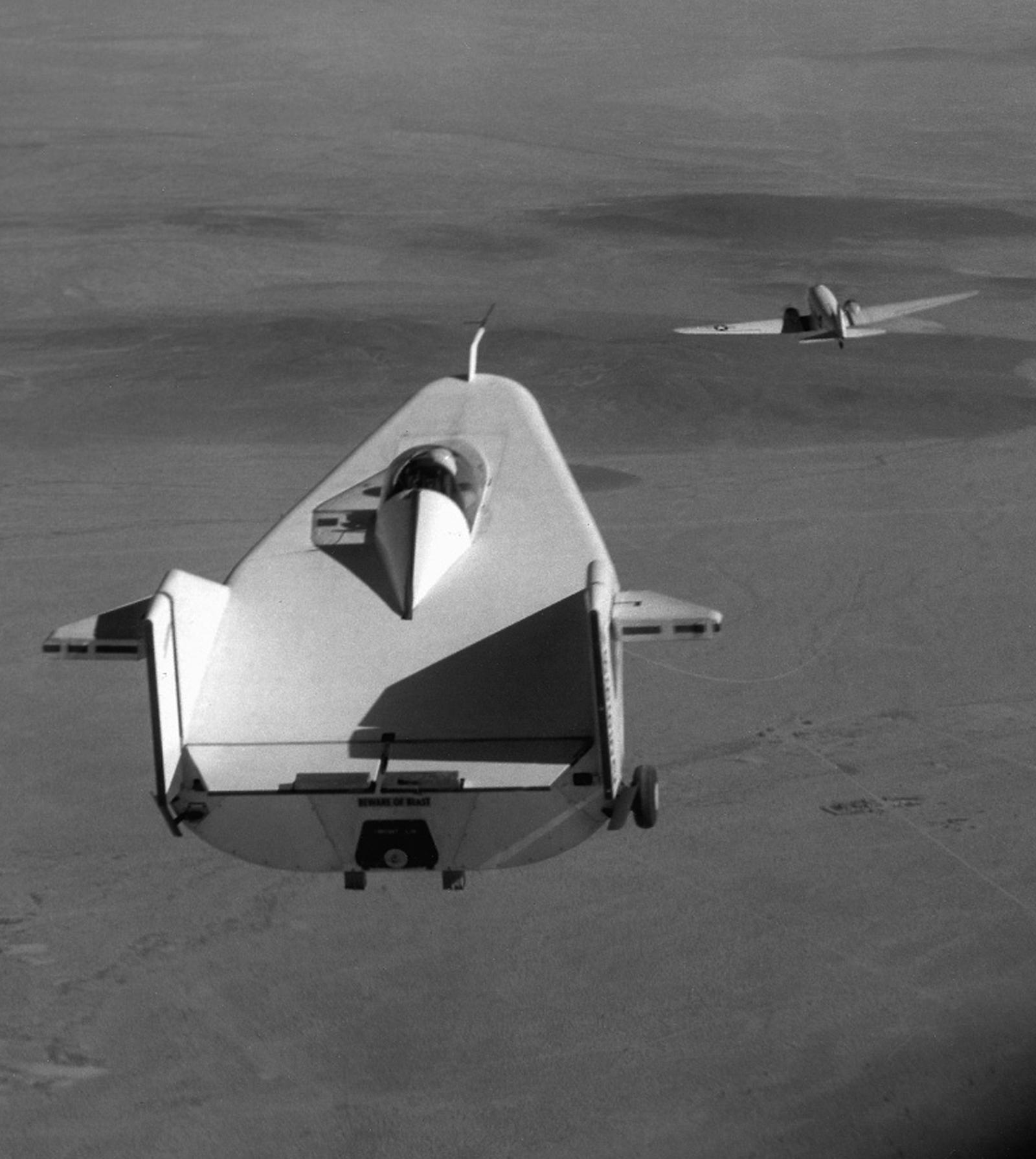
Slide title
The M2-F1 on tow behind a NASA C-47
Button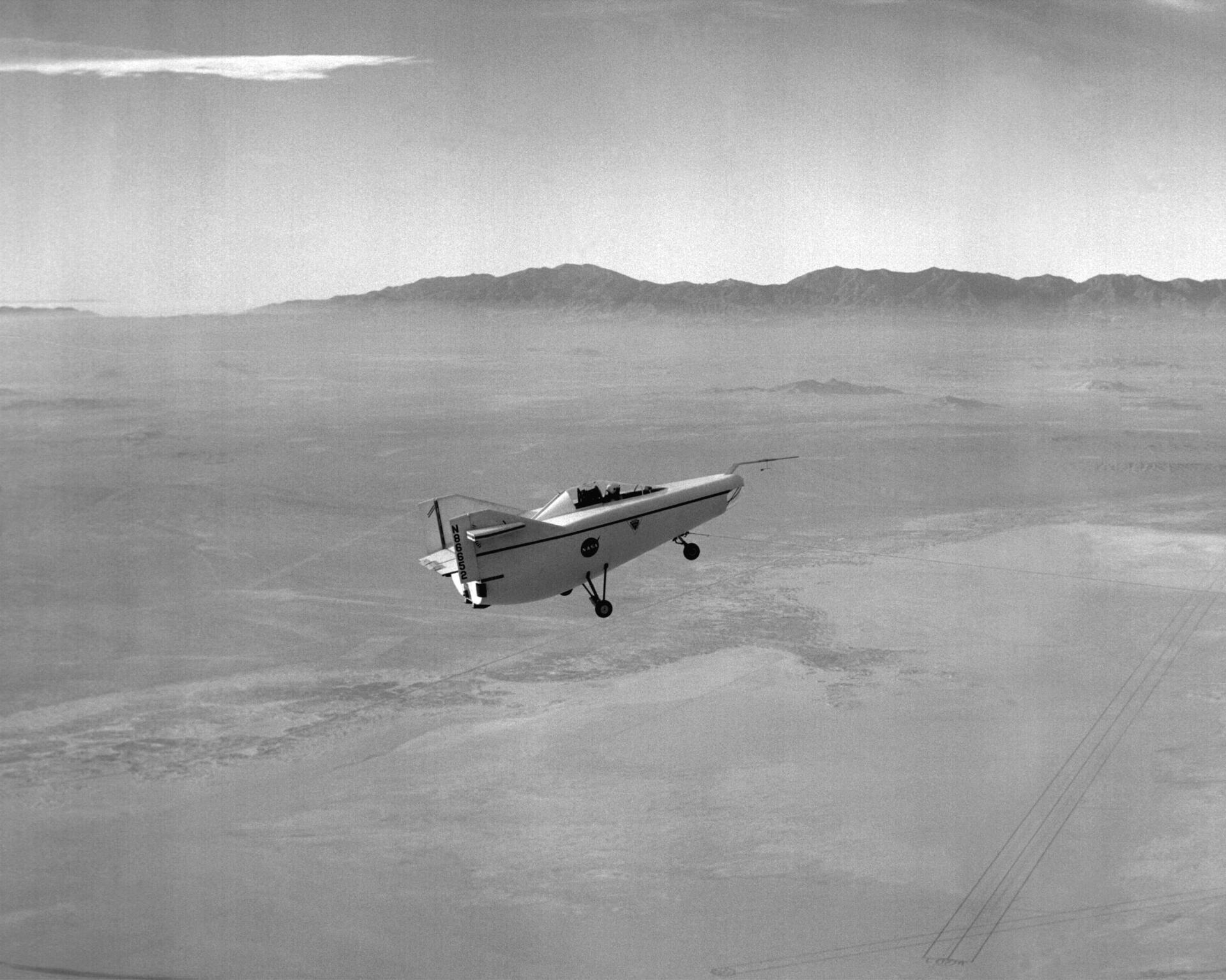
Slide title
M2-F1 in flight over the dry lake bed
Button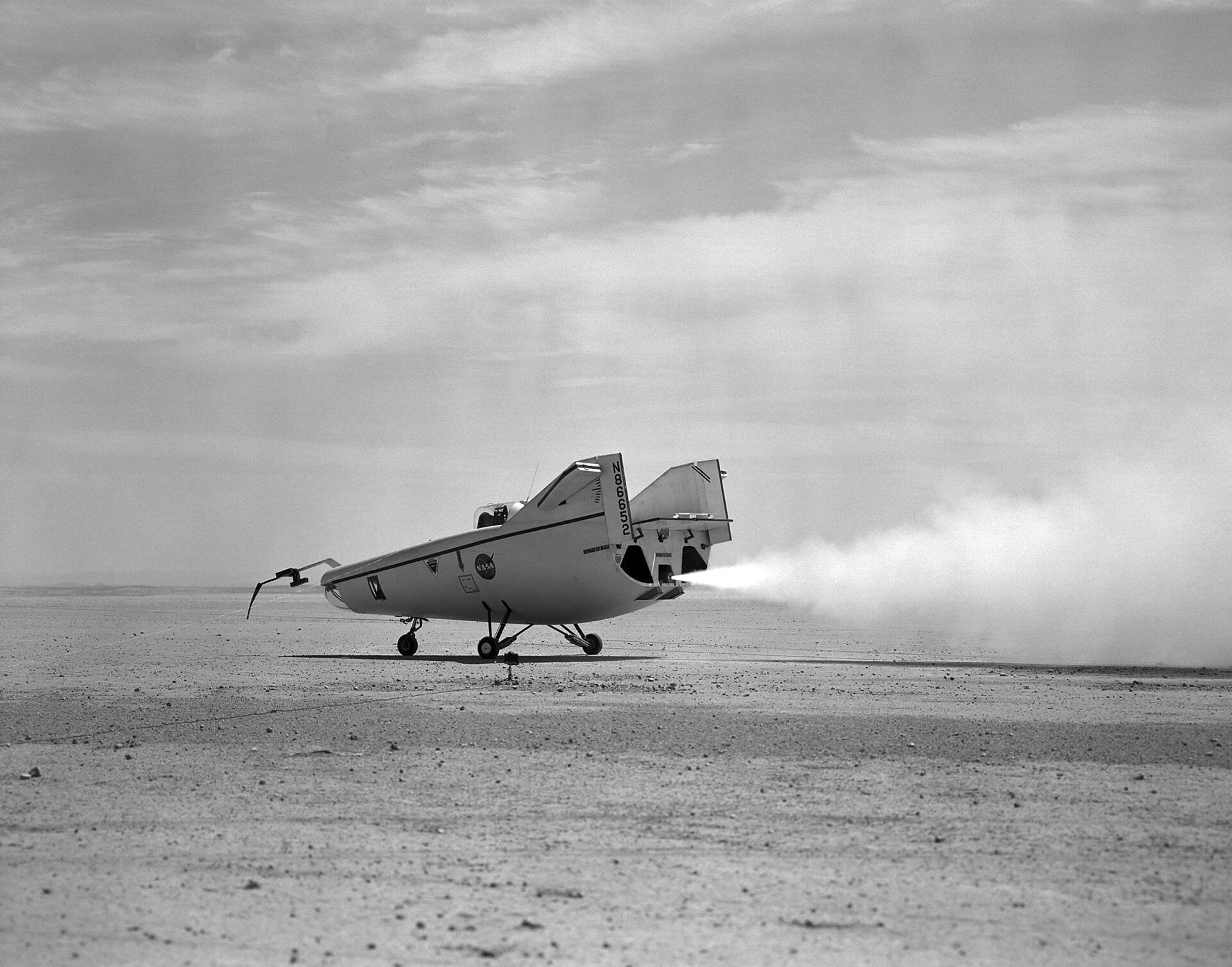
Slide title
The M2-F1 tests and instand lift/drag rocket to aid a softer landing
Button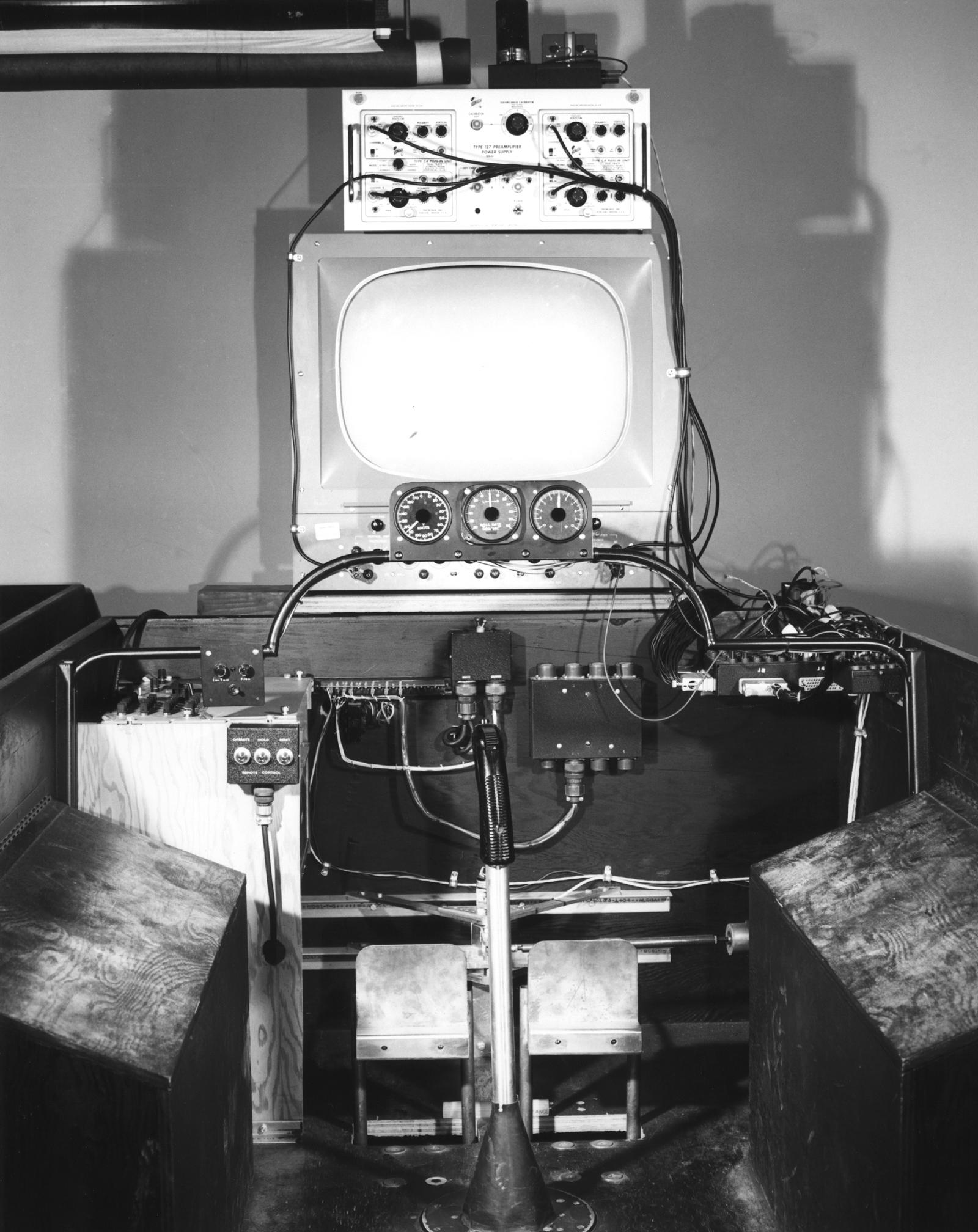
Slide title
An early flight simulator of the M2-F1 lifting body
Button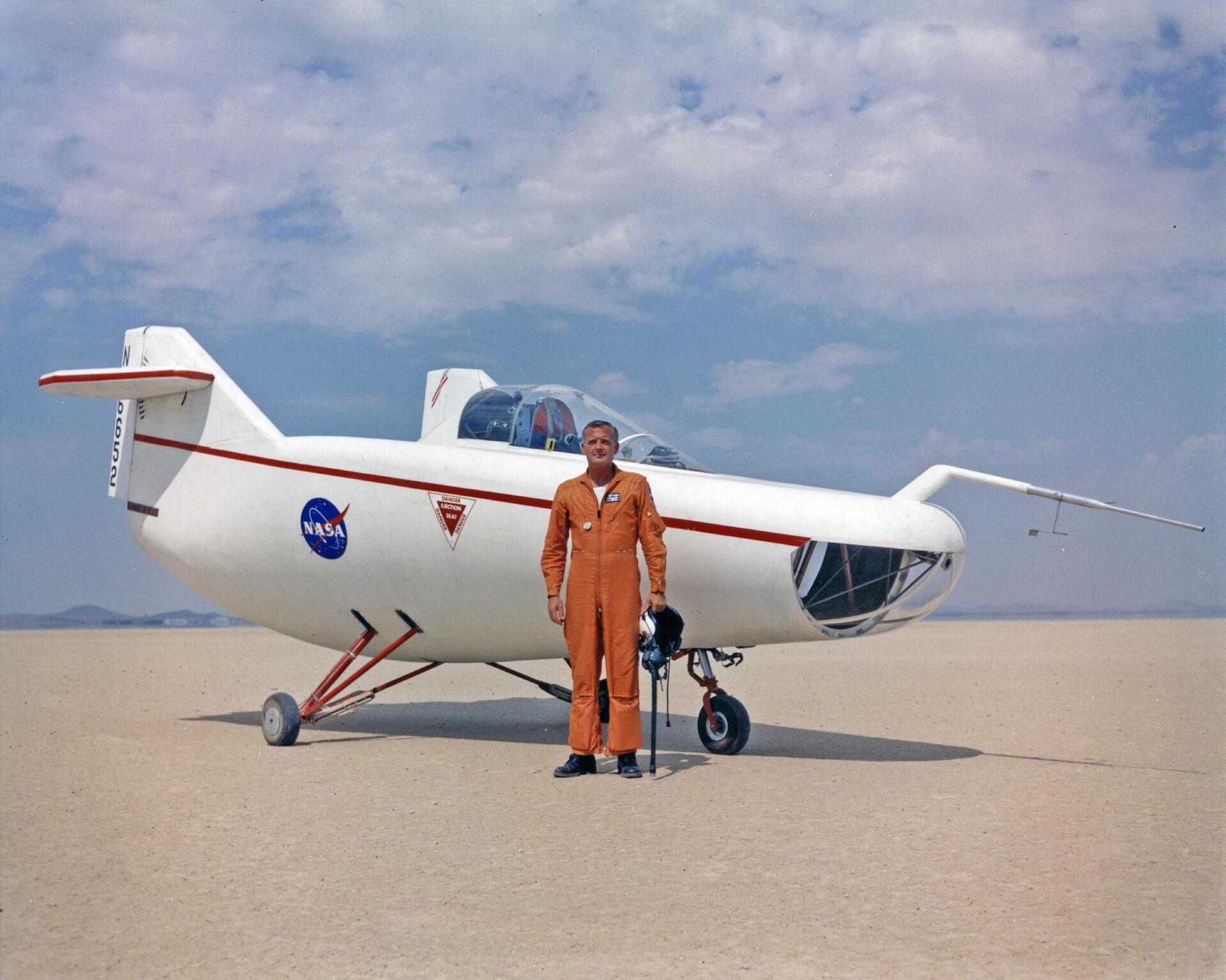
Slide title
The M2-F1 with the prime pilot for the program - Milt Thompson
Button
Slide title
Milt Thompson, then Colonel Chuck Yeager (in pilot seat), Bruce Peterson & Don Mallick.
Button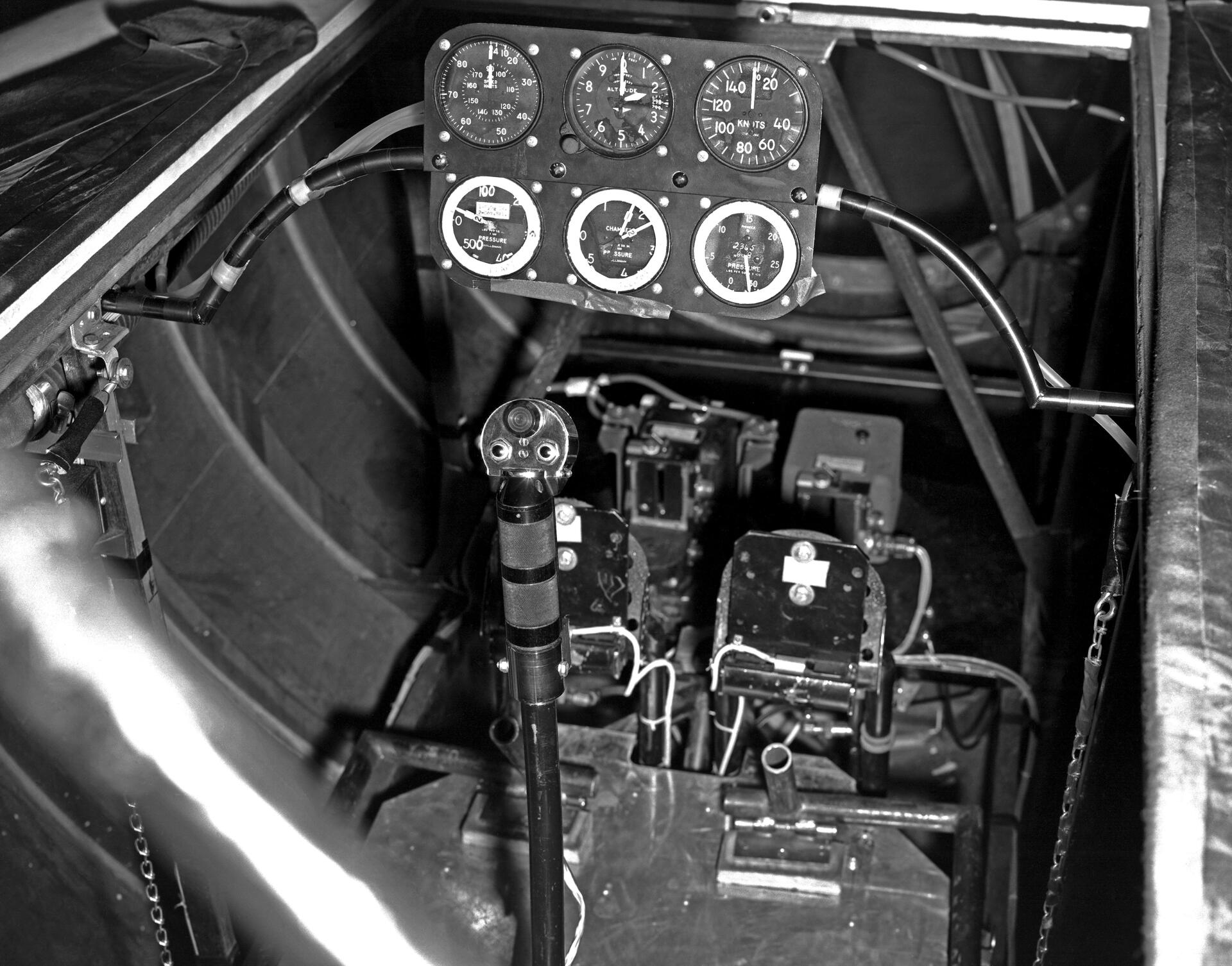
Slide title
The M2-F1 cockpit
Button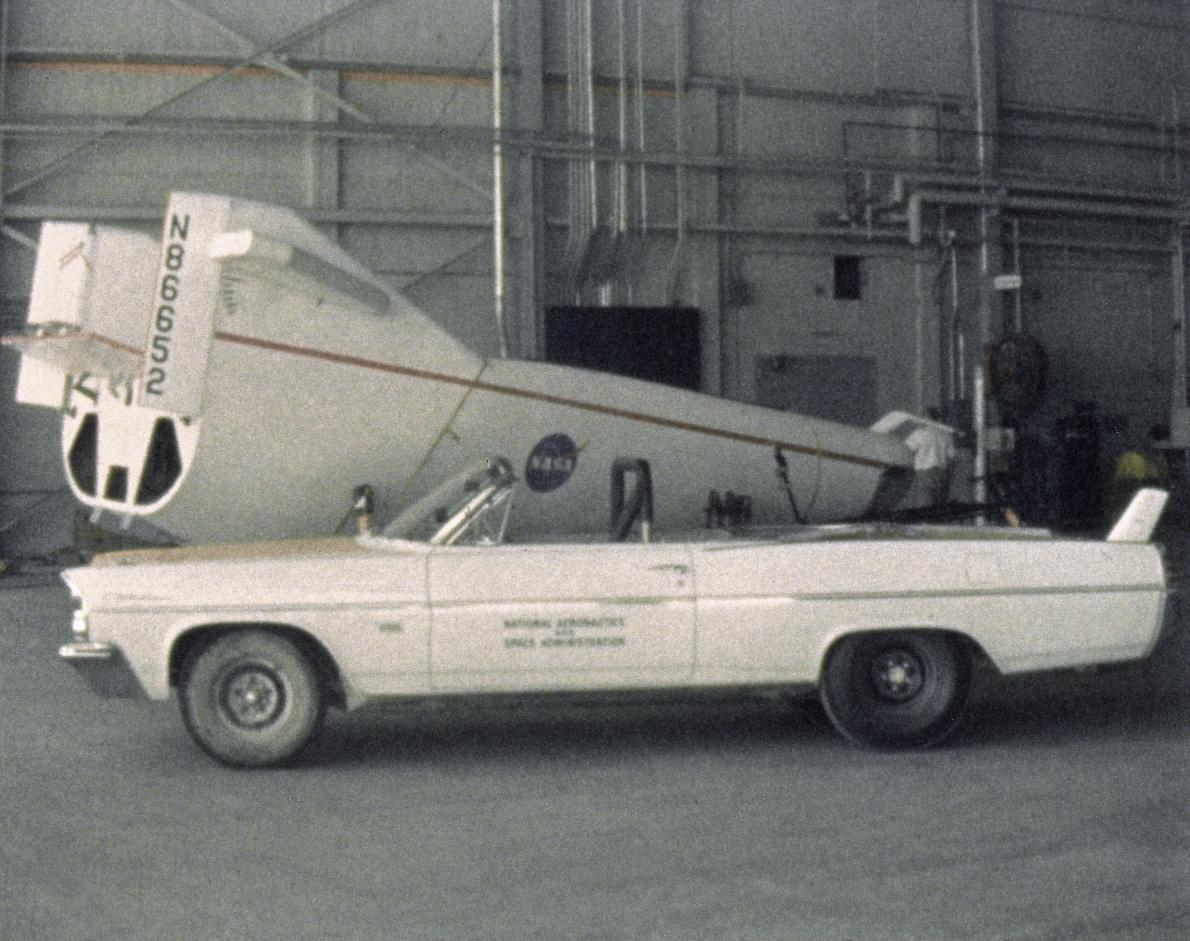
Slide title
The M2-F1 in its hangar with the Pontiac Catalina tow car
Button
Dale Reed, the Father of the Lifting Body
The individual who carried the idea of the lifting body concept forward was Dale Reed, an engineer who began working for the NACA in 1953 at the NACA HIGH SPEED FLIGHT RESEARCH STATION, Edwards AFB, California. Aircraft such as the X-1, X-2, X-4, X-5, Douglas D-558-II and Convair XF-92A were being tested to the maximum of their flight envelopes at Edwards. Reed’s first job assignment involved measuring aerodynamic loads on the wings and tail surfaces of the Bell X-5 variable sweep wing airplane. Over the following years, Reed became a specialist in this sort of measurement work, doing flight research with the X-1E, F-100A, D-558-II and X-15. During this period, Reed became fascinated by the possibility of an airplane that could fly without wings. In 1962, Reed decided to construct a free flight model, which was of a half-cone shape design. Over a period of time the flight testing of the model progressed from hand launching to being towed aloft by radio controlled model airplane. Reed knew it was time to show his peers and bosses how stable this new concept was, so a film was made of the model in flight with the help of Reeds wife Donna.
Joining Reeds lifting body cause was Dick Eldredge, between them they knew that to get backing for the project, they would need the assistance of a NASA research pilot. Milt Thompson was a very bright, gifted, wild and handsome guy. All the women at Dryden seemed to be in love with him. When Dale & Dick presented their ideas for testing lifting bodies, they asked Thompson if he would join them and fly a lifting body (if and when one was constructed). Milt gave a resounding “YES”.
Paul Bikle backs the project
First presenting the plan to Eggers & Flight Research Center Director Paul Bikle. The plane was approved to build a very lightweight vehicle what could be towed across the lakebed with a ground vehicle, and later aloft with a light plane. This craft was called the M2-F1. There was an article on the M2-F1 in the November 12th 1962 issue of the Los Angeles Times. The article stated “FLYING BATHTUB MAY AID ASTRONAUT RE-ENTRY”. A photograph of Milt Thompson sitting in a mock-up of the M2-F1 accompanied the article and it looked very much like Milt was sitting in a bathtub. The name stuck!
Construction of the craft was of a tubular frame to which would be attached the seat, flying controls and undercarriage. The shell of the lifting body was constructed by sailplane builder Gus Briegleb for the cost of $10,000 and weighed less than 300lbs. It took exactly four months from the day Bikle instructed Reed to go ahead with the project to the rollout of the M2-F1. Total cost for the world’s first lifting body wingless aircraft was less than $30,000.
Yeager flies for NASA!
Milt Thompson made the first seventeen flights of the M2-F1 during August, September, October, November and December of 1963 and found it a delight to fly and easy to handle in the dead-stick (unpowered glide) landings. Paul Bikle asked his old friend and commandant of the Aerospace Research Pilot school (ARPS) at Edwards Colonel Chuck Yeager to fly the M2-F1 and give his assessment of the vehicle before any other Air Force pilots were allowed to fly it. Yeager made his first flight in the M2-F1 on December 3rd, 1963 (he made a brief car towed flight to 20ft altitude during the last week of November). Yeager was a very competitive pilot and on this his first flight, expanded the flight envelope by flying the M2-F1 at faster and slower speeds during practice landing manoeuvres at altitude that had Milt Thompson. Then Yeager dove the M2-F1 toward the lakebed at a steeper angle of descent than Milt had used, levelled out and made a greased-on landing right at the spot he said he would touch down at. Yeager exclaimed, “She handles great!” just after climbing out of the cockpit. Another NASA pilot, Bruce Peterson made his second flight that day just after Yeager. Due to the extreme colds from the high altitude, the M2-F1 had been towed to on its previous two flights, the oil in the landing gears shock absorbers had thickened dramatically. This caused the landing gear to fail on Peterson’s touch down. It would be almost two months before repairs could be effected and flight testing resume. During this time, Yeager had a terrible accident in the Lockheed NF-104 and was badly burned. Nothing short of miraculous, Yeager had recovered sufficiently enough to be restored to flight status and made two flights on January 29th, 1964 along with Milt Thompson and Bruce Peterson.
Yeager asked Dale Reed for permission to roll the M2-F1 in flight, as he believed that he could make a perfect barrel roll in the little craft. Reed denied that request and Yeager never tried to roll it in his last flight in a lifting body that day. Yeager was now a fan of the lifting body concept and told Bikle that the lifting body handled well and that he would like to have a few jet-powered versions (which at that time had not been built) to use at the ARPS for training future lifting body pilots. Nothing came of this proposal, but subsequent rocket powered variants such as the M2-F2, M2-F3, Northrop’s HL-10, Martin’s X-24A & X-24B were successful and were powered by the same Reaction Motors XLR-11 motor as the Bell X-1.
The M2-F1 is on display at the Dryden Flight Research Center at Edwards AFB, California. For further reading on the lifting bodies, please click on Lifting Bodies and NASA fact sheet about the M2-F1. Both sites are by NASA Dryden Flight Research Center.
Early M2-F1 Pontiac Ground Tow Flight - NASA Dryden video via YouTube
